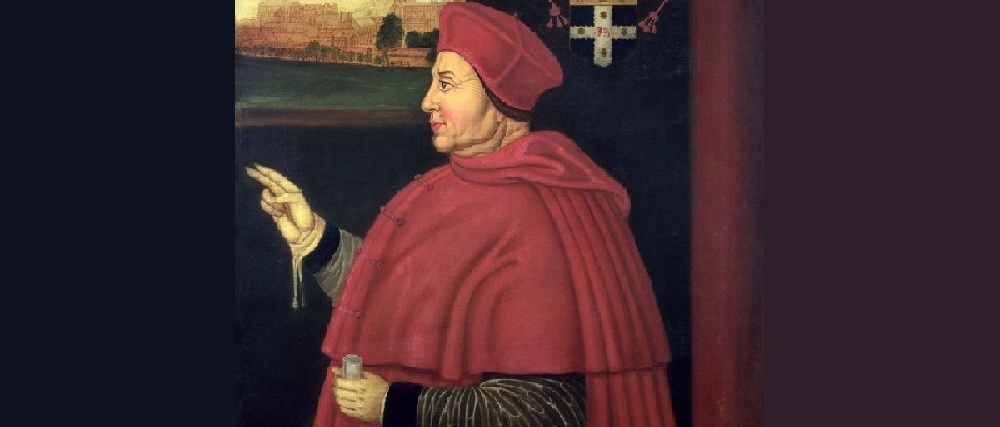Thomas Wolsey - Fact File
Posted on 10th February 2023
Thomas Wolsey was born around 1473 in Ipswich, Suffolk, England.
Attended Ipswich School, Suffolk, then studied Theology at Magdalen College, Oxford, where he held the position of Master of Magdalen College School and then Dean of Divinity.
March 1498: Ordained a Priest in Marlborough, Wiltshire.
1500 – 1509: Wolsey held the living at the Church of St Mary, Limington, Somerset.
1502 – 1503: Became Chaplain to Henry Dean, Archbishop of Canterbury and in 1503 he entered the household of Sir Richard Nanfan.
1507: Wolsey entered the service of King Henry VII and was appointed as Royal Chaplain; he also served as secretary to Richard Foxe (adviser to the king).
April 1508: Sent to Scotland to discuss the Auld Alliance (alliance between Scotland and France) with King James IV of Scotland.
Following the death of Henry VII in April 1509, Wolsey entered the service of Henry VIII.
November 1509: Appointed to the position of Almoner (church official charged with distributing money to the poor). This then gave him a seat on the Privy Council (advisers to the king).
The titles bestowed on Thomas Wolsey continued and he became the kings most trusted advisor.
1511: Became Canon of Windsor.
1514: Became Bishop of Lincoln and Archbishop of York.
1515: Appointed by the king as Lord Chancellor. Also made a cardinal by Pope Leo X.
1512: England formed an alliance with Maximilian I, Holy Roman Emperor, Ferdinand V of Spain and Pope Julius II against Louis XII of France. This alliance led to war against France. The first campaign was unsuccessful, but a further campaign in 1513 gained more success and led to the Anglo-French treaty of 1514 in which Wolsey was key negotiator.
1518: Wolsey was named Papal Legate of England and organised the Treaty of London, giving peace between England, France, the Holy Roman Empire and the Papacy.
1520: Wolsey was a great diplomat and one of his greatest triumphs was the organisation of the ‘Field of the Cloth of Gold’, a large, lavish display of England’s wealth and power that was attended by many thousands of Henry’s followers. This involved the arrangement of a meeting between Henry VIII and Francis I of France.
1521: Charles V, became Holy Roman Emperor in 1519 and at the Calais Conference in 1521, Wolsey signed the secret Treaty of Bruges with Charles V, Holy Roman Emperor. Wolsey agreed that England would join forces with Spain and the Holy Roman Empire in war against France, if France refused to sign the peace treaty. This would mean ignoring the previous peace treaty of 1518.
1527: England eventually abandoned the Holy Roman Empire and signed a new treaty with France.
Wolsey’s life was now to be dominated by Henry VIII’s desire for a divorce from his wife, Catherine of Aragon. Henry believed his marriage was unlawful and also cursed. He ordered Wolsey to arrange an annulment. Henry believed this would be easily obtained due to Wolsey being Papal Legate, however this was not to be the case.
Wolsey appealed to the Pope on three separate fronts for Henry VIII's divorce, but the Pope would not make a decision. He decided to allow both Wolsey and Cardinal Campeggio to decide the outcome, however the Pope later revoked this right which sealed the fate of Thomas Wolsey.
1529: Wolsey was removed from many of his titles including Lord Chancellor; he was however allowed to keep the title of Archbishop of York. While travelling to York, he was accused of treason and ordered to return to London.
Thomas Wolsey fell ill on the journey to London. He died at Leicester on 29 November 1530. He is buried at Leicester Abbey.
Tagged as: Junior Fact-Files
Share this post:





